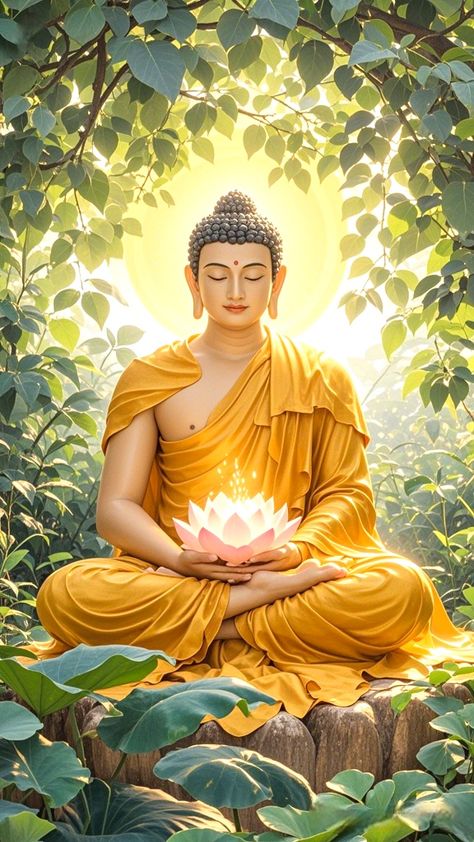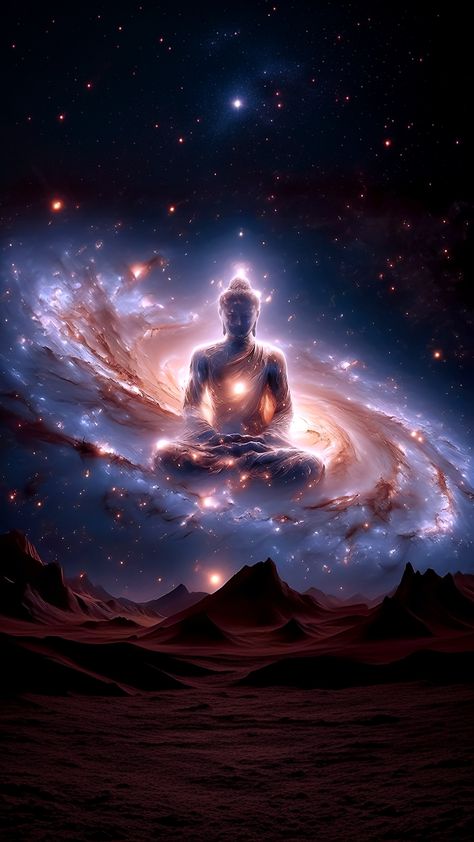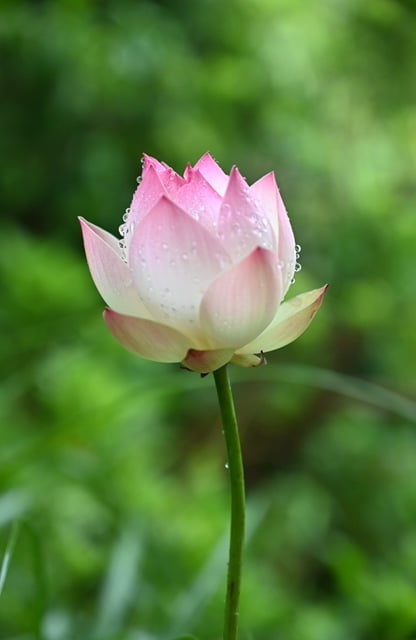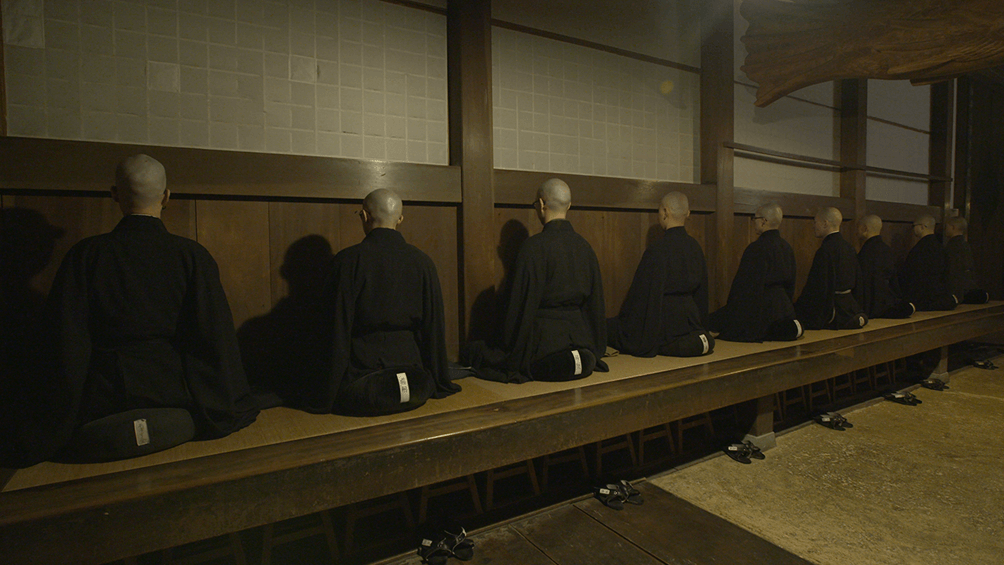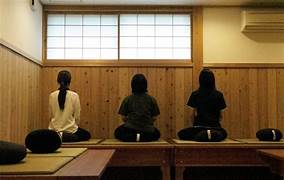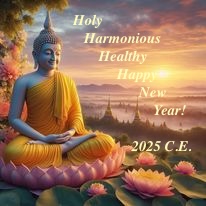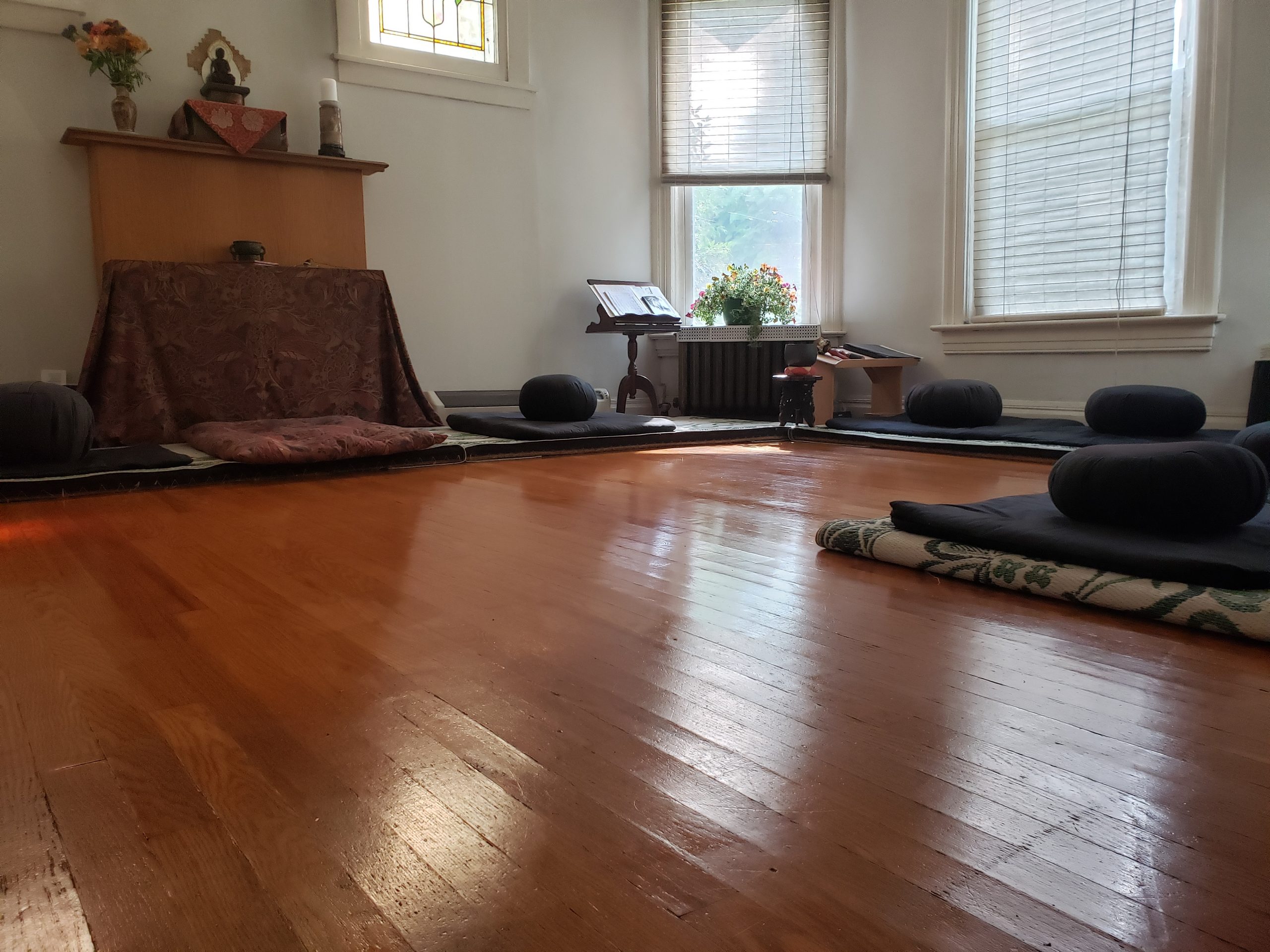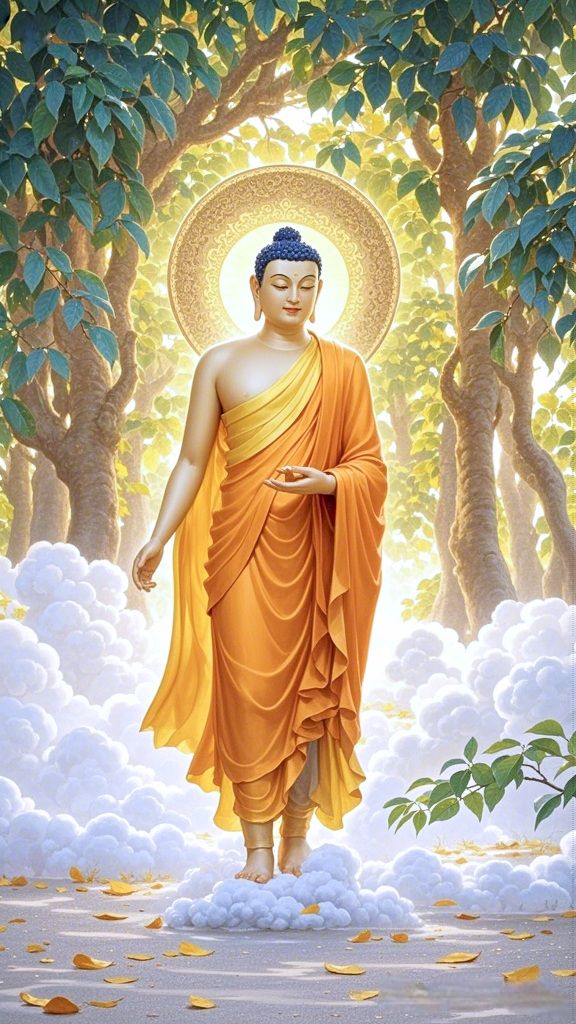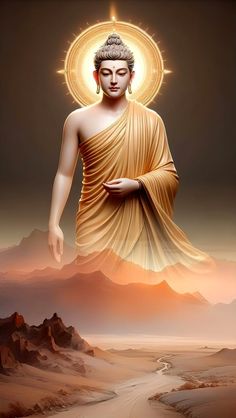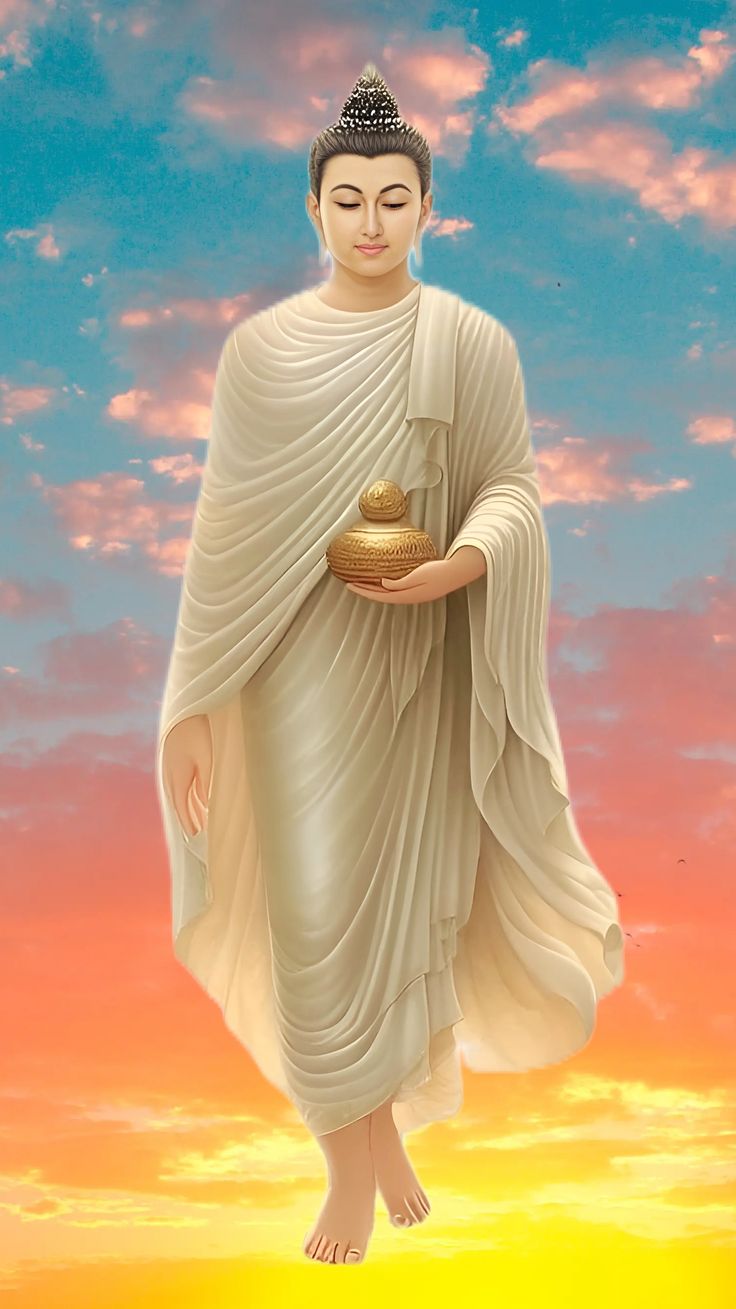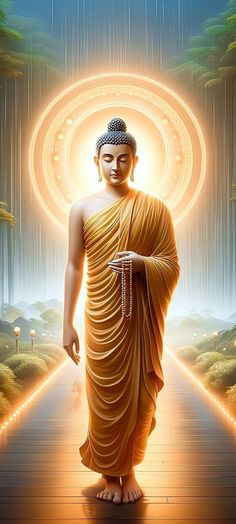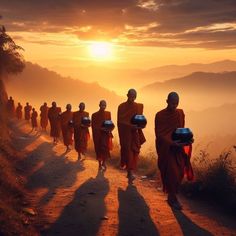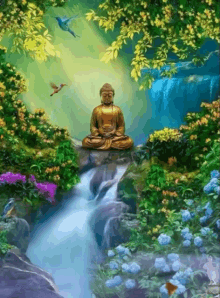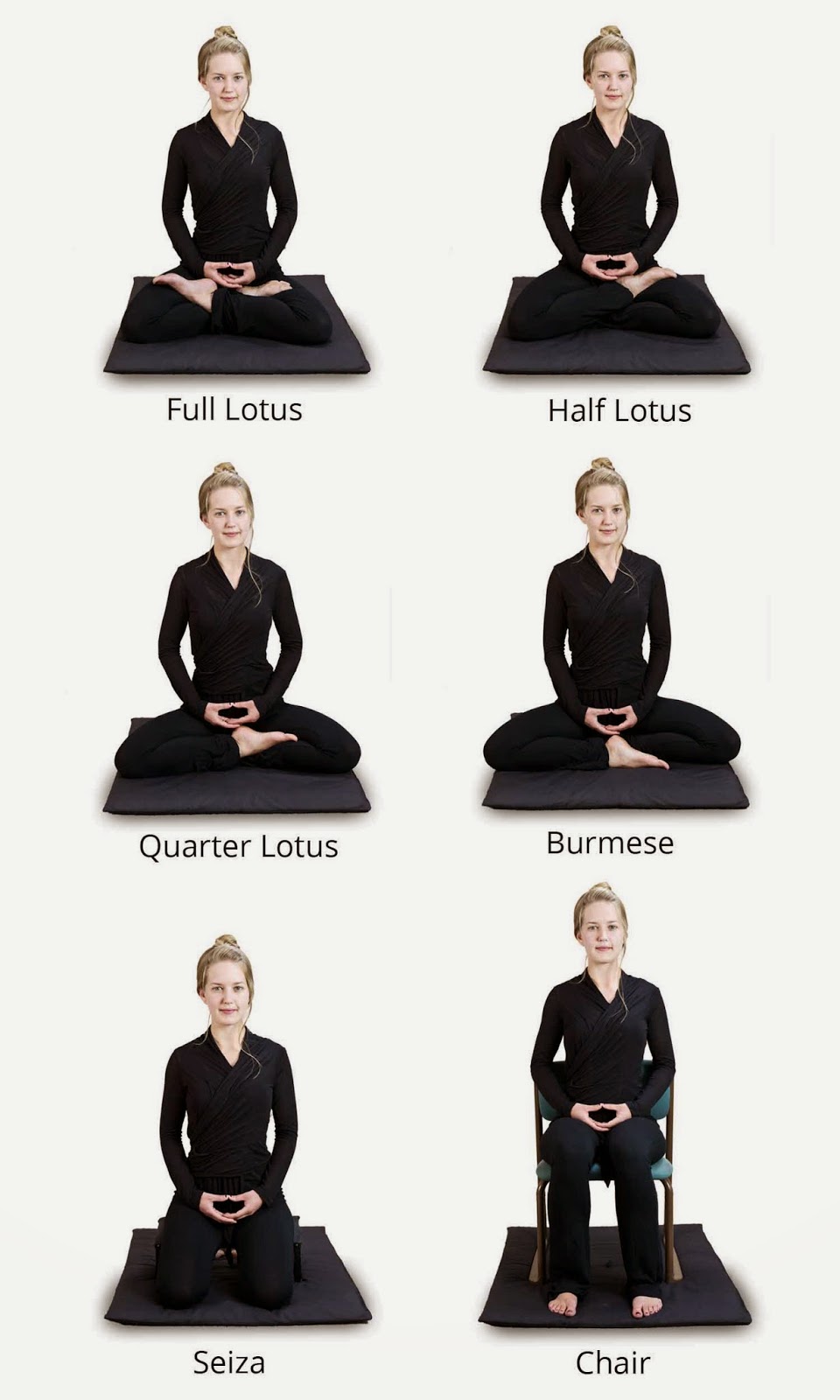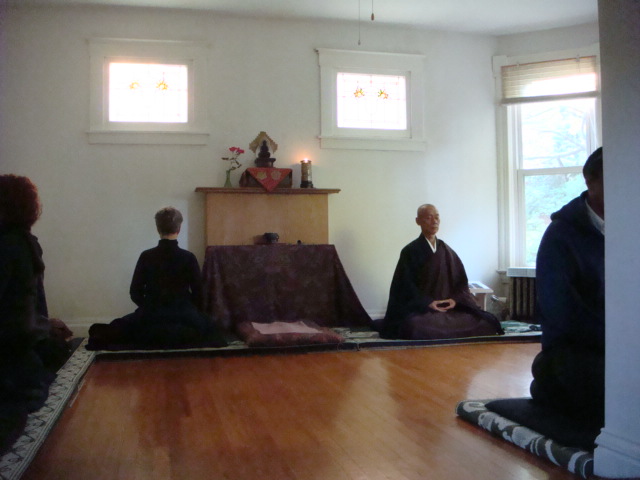Awakening for all: Zazen Living: Dharma Living
Anyone’s individual inevitable suffering is that of samsara (birth-death, representing the eight sufferings and the four sufferings of birth, aging, sickness, and death, including the rest). This is magnified by social and environmental problems and sufferings.
Our sufferings are summed up as “in short, the commotion of the five appropriated aggregates (forms, feelings, ideas, actions, consciousnesses),” which is due to our karma, imbued with the triple poisons of desire, divisiveness, and delusion.
Zazen stills karma (past / present, physical / verbal / mental), a vital formation with the two roots of craving and nescience that leads to suffering and appropriation, which is ceased by nirvana (no wind, of karma). The witness of nirvana is awakening.
Nirvana is the cessation of karma, craving, and appropriation, thus the triple poisons, suffering, and samsara in upekhā / upekṣā (renouncing / serenity), no more “becoming” (I, my, etc.: life-death). Here one shifts from the karma realm to the Dharma realm, amrita.
January 10, 2025 C.E.
Notes:
- The Twelve-limbed Dependent Co-origination (bhava-cakka/bhava-cakra, becoming wheel) is the most well-known representative application of the Dharma of Dependent Co-origination, though it is misinterpreted due to its linear presentation by oral tradition and the Hindu idea of transmigration (an embryogenetical interpretation called two causalities in three generations). Actually, it is a compound formed from the Dependent Co-origination of consciousness on sense organs and objects, of suffering on craving, and of samsara (total flow: moment-to-moment change, not like transmigration in Hinduism) on appropriation. It illustrates how our life goes with the five aggregates (originally identifying and analyzing so-called “self,” later “world”), resulting in suffering due to the triple poisons.
Please refer to 3 of “Why Buddhism Now?” for a detailed explanation of the structural explanation of the Becoming Wheel (bhava cakka/cakka):
https://buddhism869196463.wordpress.com/%e3%83%9b%e3%83%bc%e3%83%a0%ef%bc%9ahome/
- Refer to the diagram of the twelve-limbed Dependent Co-origination (above 1 and the diagram below) and the Ten Ox Herding Pictures. The six bases are eyes, ears, nose, tongue, body and mind. The body is (physical) form (for tactile sense) and the mind is the psychological function (feeling, ideas, thinking, emotion, volition to action, for visual, audio, olfactory, gastric senses) of the six bases. When formations (past / present, physical / verbal / mental karmas) cease, suffering (the result of craving) and birth-aging and death (the result of appropriation) cease, which is amata / amṛta (ambrosia / immortality). Only in awakening (witnessing of nirvana) from nescience (a-vijjā a-vidyā: no-witness, of nirvana) one can enter into total serenity / equanimity / renunciation (upekhā / upekṣā and amata / amṛta) beyond the commotion of the five aggregate. Nirvana is expressed in many ways, like the falling away of body-mind, neither birth nor death, realization of universal truth, zero-ness (suññatā / śūṇytā), etc. This is essential to embody the oneness of all, the interconnectedness of all. The ox-herder in the Ox-herding Pictures notices the footprint of the ox, gets hold of it, rides on it, returns home, forgets both himself and the ox, then forgetting home, enters into the busy thoroughfare empty-handed to mingle with people. Find what is ox, home, and throughfare for you to become a buddha (awakened one), a bodisattva (awakening-being).
- Oldoral tradition:
Nescience – formations – consciousness – name-form – six bases – contact – feeling – craving – appropriation – becoming – birth – aging-death
New structural interpretation = showing the suffering of samsara (impermanence)
Notes on the terms:
Name-form = sense object = dharma
Six bases = six sense organ
Contact = contact of sense organ and object
Formation = function (karma)
Becoming = birth/aging/death = samsara (flow)
Craving, formations & suffering are called “three steps (sando)
Nescience (existential ignorance) appropriates body-mind as self,
involved in becoming (birth, aging, death = samsara).
- The original word for appropriation is upādāna means fuel in ordinary sense. When it catches fire, it becomes fire itself. When our minds appropriate our bodies, we become bodies, sense them our bodies, our properties, thus come our “I (ego),” “my (mei),” etc.
一切の為の覚醒:坐禅 生活:法生活
誰でもの個人的不可避の苦は輪廻(生老病死の四苦とそれ以外を含む八苦を表す、生‐死)のそれである。これは社会的・環境的問題と苦によりかくだいされる。
私達の諸苦は「要するに、五取蘊(取着の形態、感覚、観念、行為、意識)の動揺である」と要約されているが、それは貪瞋痴の三毒の浸潤した業の故である。
坐禅は、渇愛と無明の二根を持つ肝要な(過去・現在の身・口・意の)行であり、苦と取着に導くが、涅槃(無風、業の)に依って静まる業を静める。
涅槃は業、渇愛、取着の静止であり、こうしてupekhā/upekṣā (捨・寂)の内に三毒、苦と輪廻の静止となり、(我、我が物等:生死)の生成はもはや無くなる。ここに人は業界から法界、甘露(不死)に転換する。
2025共通年1月10日
註:
1. 十二支縁起(生成輪:bhava-cakka/bhava-cakra)は縁起の法の最も良く知られた適用例であるが、これは口碑(口伝)の伝統による線形表示とヒンドウー教の輪廻の観念により(三世両重ー三世代にわたる二つの因果関係:過去世の因が現在世の果を生み、現在世の因が未來世の果を生むという関係)により誤って解釈っされているが。実際には、それは感覚器官と感覚対象による意識、渇愛による苦、無明による輪廻(完全・刻々の変化のことで、ヒンドウー教の輪廻とは異なる)の縁起の(三つ)の縁起により構成されている。それは(最初は所謂「我」、後には「世界」の同定と分析の為に使われた)五蘊で私達の生(命・活)が行われるかを例示したものである。
2. 十二支縁起の図(上記1と下記図)と十牛図を参照されたい。六入は眼耳鼻舌身意である。六入の身は(物質的、触覚の為の)形態であり意は(感受、観念、思想、感情、行為に至る意志を含み、視覚、聴覚、嗅覚、味覚、触覚の)心理機能である。行(過去・現在の身口意業)が止まると苦(渇愛の結果)、生老死(取着の結果)が止まり、不死(甘露・不生滅)となる。無明(a-vijjā a-vidyā: 無覚証、涅槃の)からの覚醒によってのみ人は五蘊の動揺を超えて完全な寂滅・平静・捨離・不死(upekhā / upekṣā and amata / amṛta))に入れる。涅槃は種々に表現されている、例えば心身脱落、不生不滅、普遍法の現成、空性(suññatā / śūṇytā)など。これは一切一体、一切関連性を体得するのに必須である。十牛図の牛飼いは牛の足跡を見つけ、牛を捉え、それに乗り、家に帰り、自分も牛も忘れ、更に家も忘れ、人々と共に交わる為に空手で喧騒な街路に入る。牛、家、街路が何であるか、皆さんが仏(覚醒者)、菩薩(覚醒誓願者)になる為に、みつけられたい。
3. a. 十二支縁起の古い口伝伝統:
無明ー行ー識ー名色ー六入ー触ー受ー渇愛ー取ー有ー生ー老死
b. 新しい構造的解釈=輪廻(無常)の苦を示す。
十二支縁起
3. a. 十二支縁起の古い口伝伝統:
無明ー行ー識ー名色ー六入ー触ー受ー渇愛ー取ー有ー生ー老死
b. 新しい構造的解釈=輪廻(無常)の苦を示す。
用語の説明:
名色 = 感覚対象 = 法
六入 = 六感覚器官
触 = 感覚器官と感覚対象の接触
行 = 働き (業)
有 = 生成 (生滅)= 輪廻 (流転)
渇愛、行、苦 は三道と言われている。
無明 (実存無知) は心身を自己と
取着 し
有(生、老死 (輪廻)に入る。
4. 取の原語upādānaは日常語では燃料を意味する。それは火を取ると火になる。私達が体を取る(取着する)と体になり、自らの体になり、自分の所有物になり、かくして我(エゴ)、我所(有)(メイ)となる。
.
.
..
.
.
.
.
.
.
,
,
,


